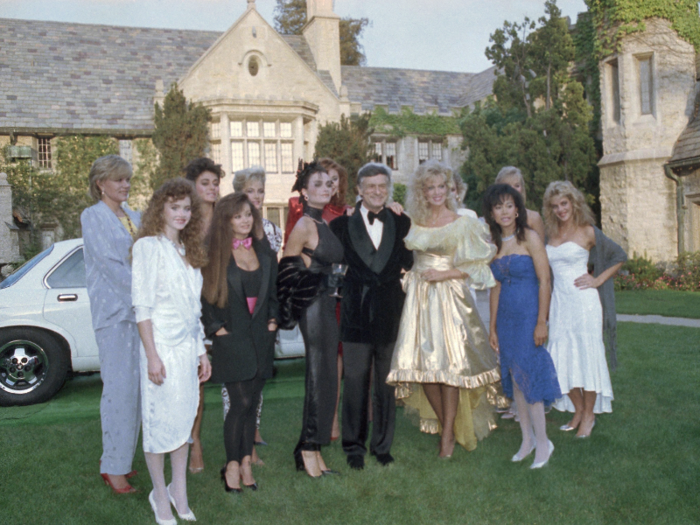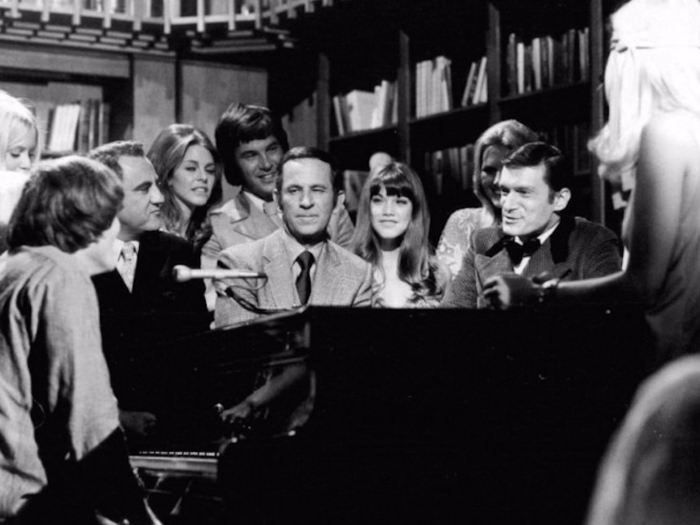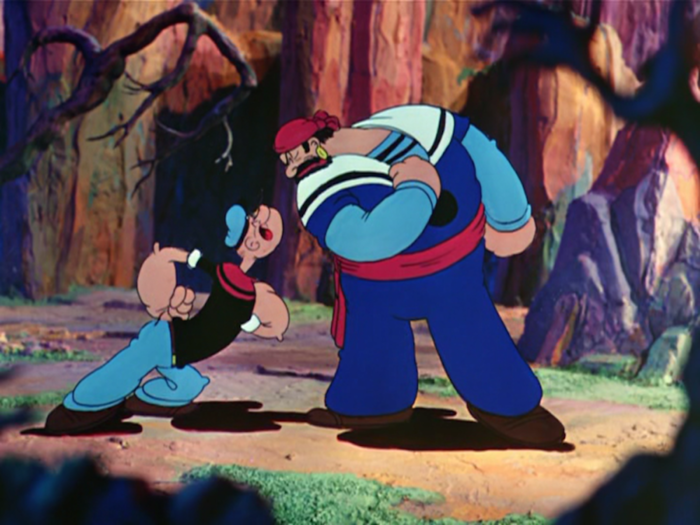- Home
- entertainment
- How Hugh Hefner turned Playboy from a pipe dream at his kitchen table to an iconic brand reportedly worth $500 million
How Hugh Hefner turned Playboy from a pipe dream at his kitchen table to an iconic brand reportedly worth $500 million
Up until Hefner's death, he served as the magazine's editor-in-chief and the chief creative officer of the Playboy brand. He also remained unapologetic about his views on sexuality, telling NPR in 2003 that, "Part of the sexual revolution is bringing rationality to sexuality. Because when you don't embrace sexuality in a normal way, you get the twisted kinds, and the kinds that destroy lives."

In 2016, the magazine announced that it was done with publishing nude pictures. By February 2017, however, Playboy had reversed its decision.

Source: CNN
As the decades went on, however, the brand evolved. Playboy moved on to different ventures, such as "The Girls Next Door," a reality show that ran from 2005 to 2009.

Source: Ranker
The magazine effectively peaked the following year, when its November 1972 issue sold 7,161,561 copies.

Source: The Conversation
In the 1970s, Hefner's fame — and infamy — only increased. The magazine acquired the Playboy Mansion in 1971 for $1.1 million. The LA estate became known for its lavish parties.

Source: The Telegraph, Playboy
Almost a decade after the magazine's founding, Hefner was arrested for obscenity. During the trial, he argued "each person should be his own judge of what is acceptable." The case resulted in a deadlocked jury.

Source: The Chicagoist
Hefner became a controversial figure during the sexual revolution in the US due to the pornographic nature of the magazine. However, the publication also ran short stories from upcoming and established authors, as well as in-depth interviews with prominent figures.

Source: The New York Times
As Playboy continued to grow, Hefner became an occasional television personality, hosting "Playboy's Penthouse" from 1959 to 1961 and later "Playboy After Dark" from 1969 to 1970.

Source: TV Party
But the publisher didn't rest on his laurels. According to his philanthropic foundation, Hefner "plowed profits back into the publication" by hiring a young, eager staff. The magazine exploded, selling a million copies a month by the end of the 1950s.

Source: HMH Foundation
The issue featured nude photos of Marilyn Monroe from a calendar shoot she'd done early on in her career. The magazine launched in December 1953 and was an immediate hit, selling over 50,000 copies.

Source: Business Insider
In the beginning, Hefner didn't have his own workspace for the magazine. He assembled the first issue of Playboy at his kitchen table.

Source: HMH Foundation, NPR
He received $1,000 from his mother and put up the furniture from his South Side apartment to use as collateral to secure $600. In total, he received $8,000 from investors.

Source: HMH Foundation
Around 1952, the idea for a risqué men's magazine began to take shape in Hefner's mind. By the summer of the following year, he was determined to launch his own magazine. But first, he needed some cash.

Source: HMH Foundation
After failing to establish his own Chicago-based magazine, Hefner became a newsstand promotion director and then a circulation director at a children's magazine.

Source: HMH Foundation, Chicago Tribune
In 1951, he went to work for Esquire as a copywriter. Shortly afterward, the magazine packed up and left Chicago for New York. After being denied a $5 raise, Hefner chose to stay in his hometown, Business Insider reported.

Source: HMH Foundation, Business Insider
He became a personnel manager for the Chicago Carton Company in 1949 and then took a job as an ad copywriter for a department store the next year.

Source: HMH Foundation
For some time, Hefner pitched ideas for cartoon strips to newspapers. They all failed to sell.

Source: HMH Foundation, USA Today
Instead, Hefner went back to school. He graduated from the University of Illinois at Urbana Champaign in 1949 and headed to Northwestern University to earn a graduate degree in sociology. He wrote a paper on laws pertaining to sex in the US, but left after a semester.

Source: HMH Foundation
According to NJ.com, his artistic skills — or lack thereof — earned him a rebuke from colleague and future Popeye cartoonist Hy Eisman, who told him that "he'd better have a job waiting for him after the war."

Source: NJ.com, Forces.net
During World War II, the Chicago native served as an infantry clerk. He spent the war drawing cartoons for several military newspapers.

Source: NJ.com, Forces.net
Popular Right Now
Popular Keywords
Advertisement
